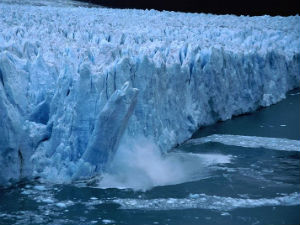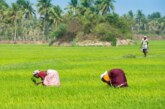Global Climate Change
Global climate change has already had observable effects on the environment. Glaciers have shrunk, ice on rivers and lakes is breaking up earlier, plant and animal ranges have shifted and trees are flowering sooner.
The study – part of a five-year research project on four continents, the first to take a close look at 10 river basins – is based on data from 17 climate models used by the Intergovernmental Panel on Climate Change (IPCC) to examine the potential effect of changing temperatures and rainfall patterns on the water flows in rivers from now until 2050. Mark Mulligan, a leading author of the study, has opined that climate models cannot predict how rainfall patterns will behave in future with a high degree of certainty: “What we do know is that we cannot be confident about hydrological stability. Some rivers could become wetter and then drier, or vice versa. The key message to countries is: ‘Become more adaptable’.”
In Asia the seasonality of changes in rainfall and temperature – which affects how rivers behave in the wet or dry season – will be critical, especially in wet basins like the Mekong. Mulligan drew parallels with the uncertainty of the current financial crisis, pointing out that unprepared institutions and experts were responding in crisis mode. He said their findings on the impact of climate change on river basins indicate that the world faces an uncertain future regarding water, and the impact was unpredictable. A framework is needed to plan a strategy for the better management of water, and make countries and people more resilient.
Below are some of the regional impacts of global change forecast by the IPCC:
North America: Decreasing snowpack in the western mountains; 5-20 percent increase in yields of rain-fed agriculture in some regions; increased frequency, intensity and duration of heat waves in cities that currently experience them.
Latin America: Gradual replacement of tropical forest by savannah in eastern Amazonia; risk of significant biodiversity loss through species extinction in many tropical areas; significant changes in water availability for human consumption, agriculture and energy generation.
Europe: Increased risk of inland flash floods; more frequent coastal flooding and increased erosion from storms and sea level rise; glacial retreat in mountainous areas; reduced snow cover and winter tourism; extensive species losses; reductions of crop productivity in southern Europe.
Africa: By 2020, between 75 and 250 million people are projected to be exposed to increased water stress; yields from rain-fed agriculture could be reduced by up to 50 percent in some regions by 2020; agricultural production, including access to food, may be severely compromised.
Asia: Freshwater availability projected to decrease in Central, South, East and Southeast Asia by the 2050s; coastal areas will be at risk due to increased flooding; death rate from disease associated with floods and droughts expected to rise in some regions.
http://climate.nasa.gov/effects



